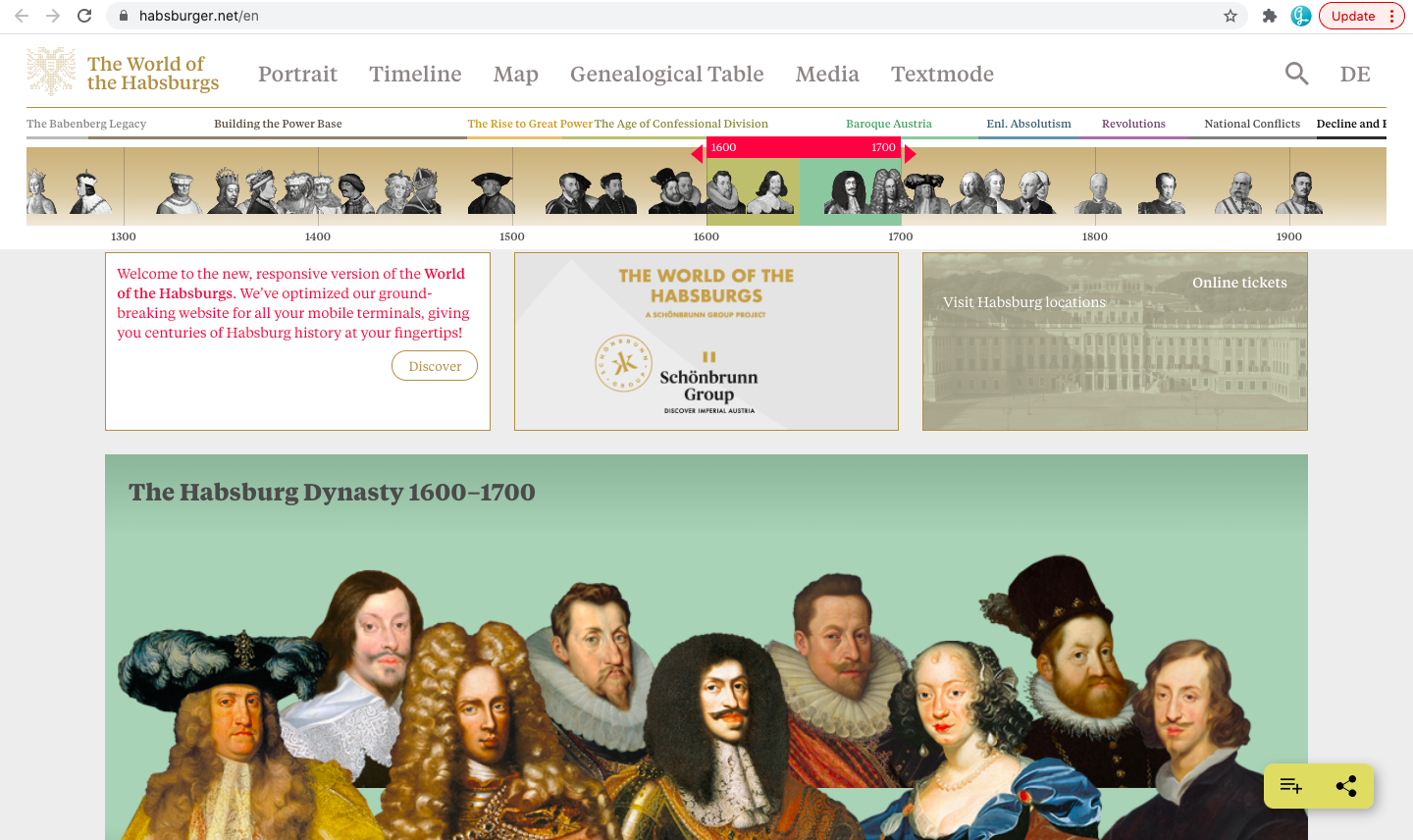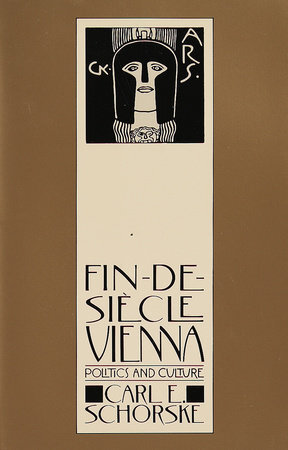How to Geek Out on the Habsburgs
Benjamin Curtis | benjamincurtis.me
If you want to do a deep dive on the most important family in European history—or, heck, even if you don’t want to go fully down the rabbit hole, but do want to learn a bit more—then I’ve got some resources for you. These are a few websites, movies/tv series, and books (besides the one I wrote) that are all worth exploring. Enjoy—I’d be interested to hear if you have any favorites!
WEBSITES
The World of the Habsburgs: This is my top recommendation, whether you want to spend five minutes or five hours learning more about the family. The website is incredibly well done, with short bios of important Habsburgs, useful timelines, maps, genealogical tables, and lots of multimedia content.
The World of the Habsburgs website
Image | hapsburger.net/en
The Imperial Treasury: As part of April’s Guide Collective Book Club, I’m doing a short talk on “Habsburg Treasures.” But if you want to gawk at some more incredible baubles, take a look at the website of the Imperial Treasury in Vienna. It’s the richest such collection in the world, with artifacts such as the crown jewels of the Holy Roman Empire and what was once believed to be the Holy Grail itself, among many other amazing artifacts.
The Museo del Prado, Madrid, and the Kunsthistorisches Museum, Vienna: These are two of the greatest art museums on the planet, and the core of their collections was assembled by the Habsburgs. Even this short list of names cannot do justice to all the masterpieces you can enjoy via their websites: Bosch, El Greco, Titian, Rubens, Velázquez, Goya, Raphael, Dürer, Brueghel. Heaven for art fans!
MOVIES/TV SERIES
My recommendations here may or may not be easy to find, depending on which streaming services you subscribe to, or your deftness with other ways of watching things on the internet.
The Sissi movies: My top recommendation in this category is this trilogy of fictional films about Elisabeth, the glamorous-yet-tragic penultimate empress of the dynasty. These are frothy, Princess Diaries-style melodramas that made a huge star out of Romy Schneider. Though the trilogy is not well known in the English-speaking world, it’s a cultural touchstone in Central Europe. To be honest, they’re not really my kind of movie, but they perfectly encapsulate the romanticized nostalgia industry that surrounds Sisi (who actually only used one “s” in her nickname).
The first Sissi movie starring Romy Schneider
Image | Wikimedia
Mayerling: The story of how Crown Prince Rudolf shot his lover Mary von Vetsera then committed suicide is one of the juiciest in Habsburg history. It’s been filmed numerous times, but the best is this 1968 version. Its cast alone makes it worth watching: Omar Sharif plays Rudolf, Catherine Deneuve is Mary, with no less than James Mason as Franz Joseph and Ava Gardner as Sisi.
Mayerling from 1968
Image | Wikimedia
Maria Theresia: The greatest Habsburg ruler got her own four-part tv miniseries starting in 2017. Very appropriate given the dynasty’s history, this was a major co-production that involved four former Habsburg lands: Austria, the Czech Republic, Slovakia, and Hungary. The actors also come from all over Central Europe; apparently during filming, each actor spoke the lines in his or her native language, and they were dubbed later.
Carlos, Rey Emperador: The story of Charles V is told in this well-regarded Spanish production. In 17 episodes, it covers the time from when Charles first came to Spain as its new king, to the last years of his life, when he abdicated as Holy Roman Emperor and retired to a monastery. It’s a worthy take on the last great Western emperor.
BOOKS
There are many hundreds of books written about the Habsburgs and their realms, or that are set in places and times under their rule. This is a very short shortlist of a few fiction and nonfiction works that I recommend.
Don Quijote by Miguel de Cervantes: This is not only the greatest novel to come out of Habsburg Spain, it’s one of the greatest novels, period. I’ll go even bolder: It’s one of the most amazing, hilarious, profound, and stimulating pieces of art the human mind has ever produced. I’ll go still bolder: Everyone needs to read it at least once in their life, so if you haven’t already, then get on it! You can find free copies at Project Gutenberg, or buy a contemporary translation.
Don Quijote and his sidekick, Sancho Panza, in an engraving by Gustav Doré
Image | Wikimedia
Spain, 1469-1714: A Society in Conflict by Henry Kamen: This is the standard text in English for understanding Spain’s Golden Age. Though its chronological coverage begins before and ends slightly after the period of Habsburg rule, it provides an astute and highly readable account of that period. It’s particularly worth reading if you’re still stuck with the outmoded idea of Spanish history as defined by religious intolerance, backwardness, and decline.
Fin-de-siècle Vienna by Carl Schorske: A classic of scholarship that won the Pulitzer Prize back in 1981. It examines the incredible cultural creativity of the Habsburg capital around 1900, a time that produced the Secession in art, Freud’s psychoanalytic method, major advances in science, and many more trends that dramatically shaped the 20th century. Schorske analyzes how the often difficult, frequently surprising politics of this multiethnic melting pot influenced the epoch-making cultural production.
Carl Schorske’s Fin-de-siècle Vienna
Image | Penguin
Radetzky March by Joseph Roth: This novel follows one family’s rise and fall as it mirrors the decline of the Habsburg monarchy leading up to World War One. Redolent with period details, it’s both a family saga and an affecting look at how a whole civilization (namely Austria-Hungary) came apart. It’s considered one of the greatest German novels of the previous century, and I found it quite powerful.
Danubia by Simon Winder: Much lighter in tone is this personal and anecdotal history of the Habsburg lands. Though in my opinion it’s not as useful an analytical overview of the dynasty as my book, it’s a pretty easy read, and I appreciate Winder’s enthusiasm for his subject. So it’s a good follow-on if you want to dig deeper into the culture of the family and the lands they ruled.
Do get in touch if you come across any other excellent resources for a Habsburg deep dive!





